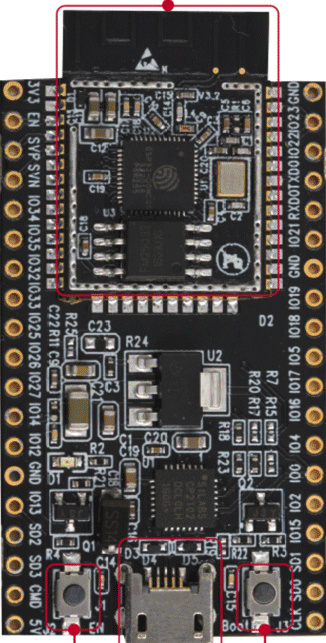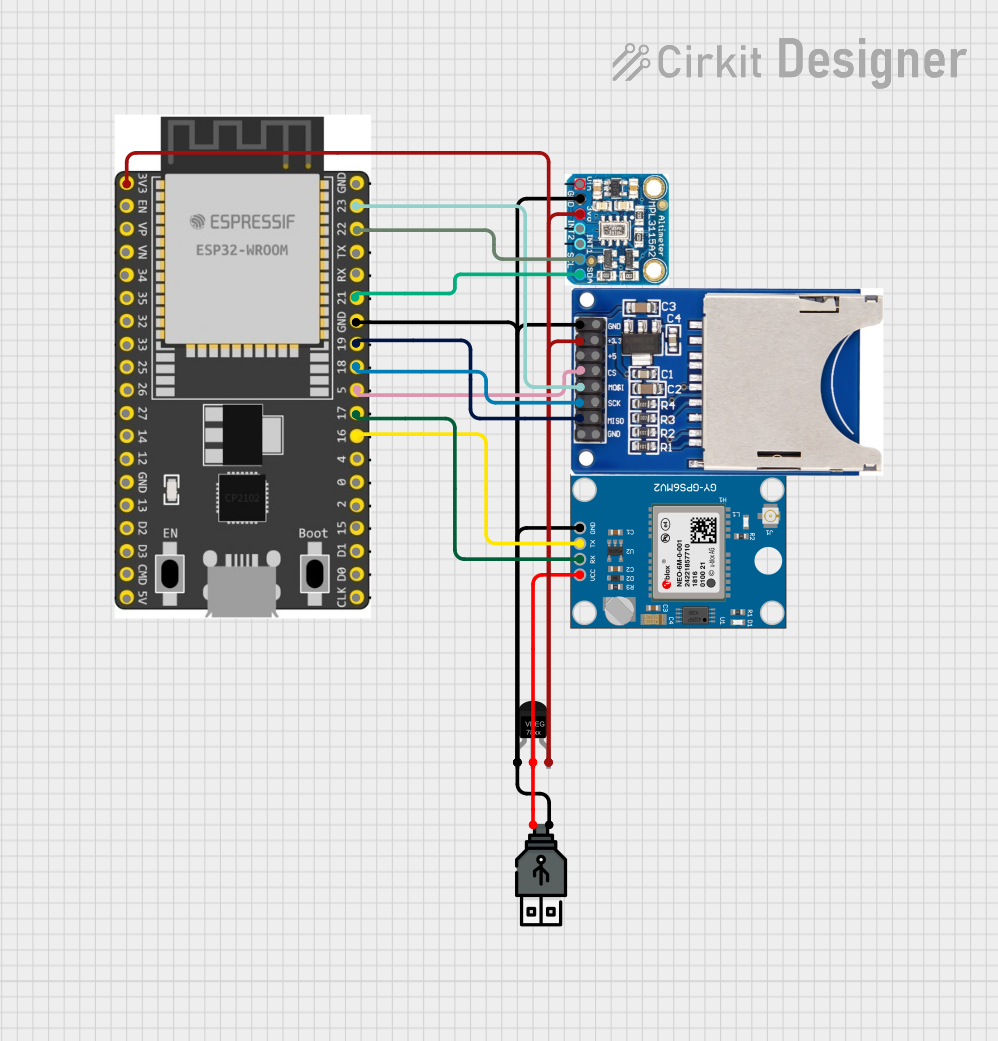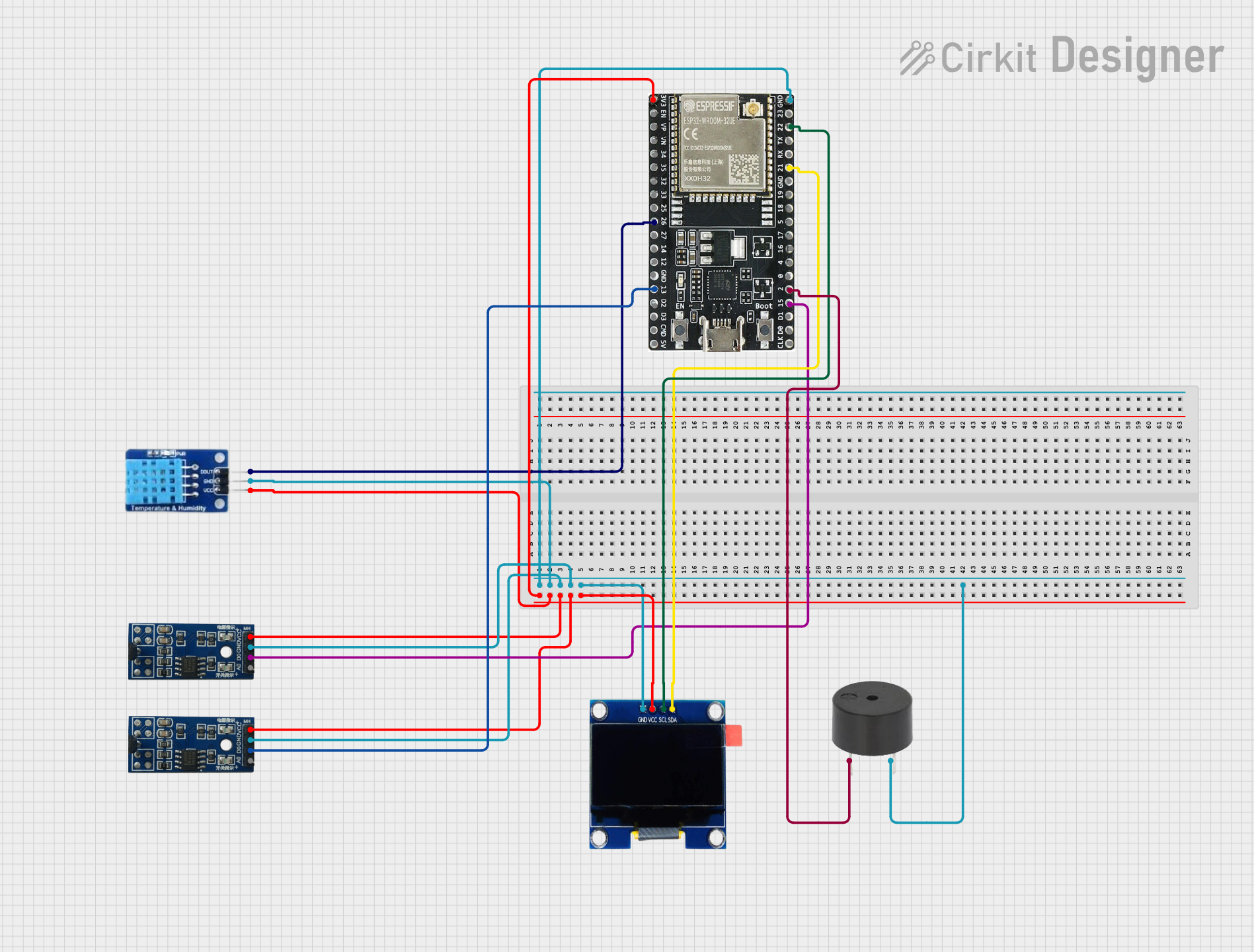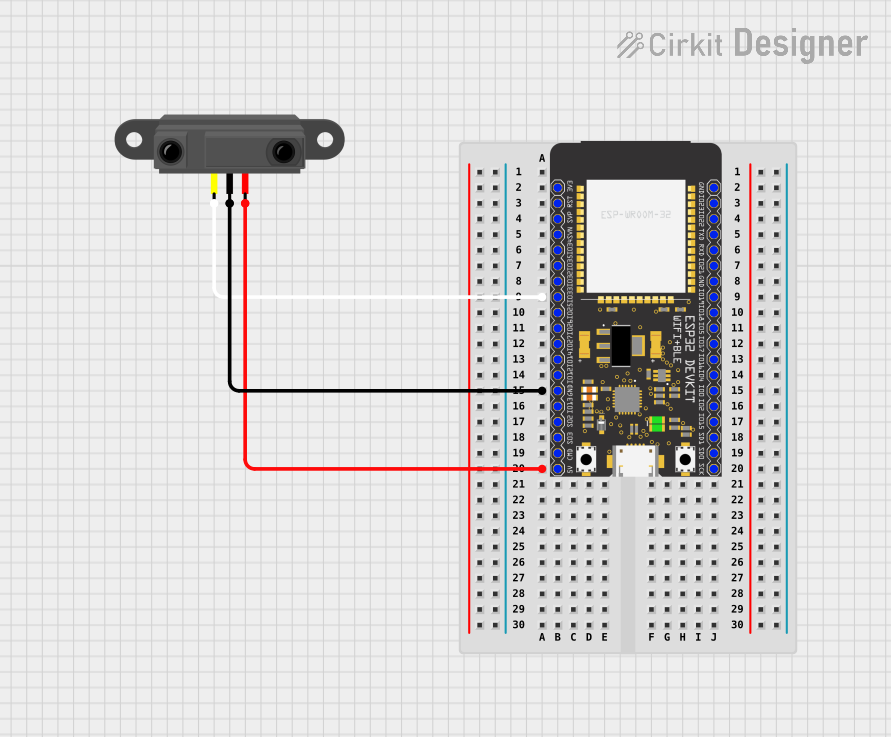
How to Use ESP32-WROOM-32D: Examples, Pinouts, and Specs

 Design with ESP32-WROOM-32D in Cirkit Designer
Design with ESP32-WROOM-32D in Cirkit DesignerIntroduction
The ESP32-WROOM-32D is a high-performance Wi-Fi and Bluetooth microcontroller module manufactured by Espressif Systems. It features dual-core processing, integrated RF components, and a rich set of peripherals, making it an ideal choice for IoT applications, smart devices, and embedded systems. With its compact design and robust capabilities, the ESP32-WROOM-32D is widely used in projects requiring wireless connectivity and efficient processing.
Explore Projects Built with ESP32-WROOM-32D

 Open Project in Cirkit Designer
Open Project in Cirkit Designer
 Open Project in Cirkit Designer
Open Project in Cirkit Designer
 Open Project in Cirkit Designer
Open Project in Cirkit Designer
 Open Project in Cirkit Designer
Open Project in Cirkit DesignerExplore Projects Built with ESP32-WROOM-32D

 Open Project in Cirkit Designer
Open Project in Cirkit Designer
 Open Project in Cirkit Designer
Open Project in Cirkit Designer
 Open Project in Cirkit Designer
Open Project in Cirkit Designer
 Open Project in Cirkit Designer
Open Project in Cirkit DesignerCommon Applications and Use Cases
- Internet of Things (IoT) devices
- Smart home automation systems
- Wearable electronics
- Wireless sensor networks
- Industrial automation
- Robotics and drones
- Prototyping and development of connected devices
Technical Specifications
The ESP32-WROOM-32D module is built around the ESP32-D0WD chip, offering a balance of performance, power efficiency, and connectivity.
Key Technical Details
| Parameter | Specification |
|---|---|
| Manufacturer | Espressif Systems |
| Part Number | ESP32D |
| Wireless Connectivity | Wi-Fi 802.11 b/g/n, Bluetooth v4.2 BR/EDR and BLE |
| Processor | Dual-core Xtensa® 32-bit LX6 |
| Clock Speed | Up to 240 MHz |
| Flash Memory | 4 MB (external SPI flash) |
| SRAM | 520 KB |
| Operating Voltage | 3.0V to 3.6V |
| GPIO Pins | 34 |
| ADC Channels | 18 |
| DAC Channels | 2 |
| Communication Interfaces | UART, SPI, I2C, I2S, CAN, PWM |
| Operating Temperature | -40°C to +85°C |
| Dimensions | 18 mm x 25.5 mm x 3.1 mm |
Pin Configuration and Descriptions
The ESP32-WROOM-32D module has 38 pins. Below is a table summarizing the key pin functions:
| Pin Number | Name | Function Description |
|---|---|---|
| 1 | EN | Enable pin. Active high to enable the module. |
| 2 | IO0 | GPIO0, used for boot mode selection. |
| 3 | IO1 (TX0) | GPIO1, UART0 TXD (default). |
| 4 | IO3 (RX0) | GPIO3, UART0 RXD (default). |
| 5 | IO4 | GPIO4, general-purpose I/O. |
| 6 | IO5 | GPIO5, general-purpose I/O. |
| 7 | GND | Ground. |
| 8 | 3V3 | 3.3V power supply input. |
| 9 | IO12 | GPIO12, supports ADC2 and touch input. |
| 10 | IO13 | GPIO13, supports ADC2 and touch input. |
| ... | ... | ... |
| 38 | IO39 | GPIO39, ADC1 channel 3. |
Note: For the full pinout and detailed descriptions, refer to the official datasheet.
Usage Instructions
How to Use the ESP32-WROOM-32D in a Circuit
- Power Supply: Provide a stable 3.3V power supply to the module. Ensure the current supply is sufficient for Wi-Fi and Bluetooth operations (at least 500 mA).
- Boot Mode: Connect GPIO0 to GND during power-up to enter bootloader mode for programming.
- Connections:
- Use UART pins (TX0 and RX0) for serial communication and programming.
- Connect GPIO pins to peripherals as needed (e.g., sensors, actuators).
- Antenna: Ensure the onboard PCB antenna is not obstructed for optimal wireless performance.
Important Considerations and Best Practices
- Voltage Levels: All GPIO pins are 3.3V logic level. Avoid applying 5V directly to any pin.
- Decoupling Capacitors: Place decoupling capacitors near the power pins to reduce noise.
- Programming: Use the Espressif ESP-IDF or Arduino IDE for development. Install the necessary drivers and tools for your operating system.
- Heat Management: Ensure proper ventilation or heat dissipation if the module operates under high loads.
Example Code for Arduino IDE
Below is an example of how to connect the ESP32-WROOM-32D to an Arduino IDE and blink an LED:
// Example: Blink an LED using ESP32-WROOM-32D
// Connect an LED to GPIO2 with a 220-ohm resistor.
#define LED_PIN 2 // GPIO2 is connected to the LED
void setup() {
pinMode(LED_PIN, OUTPUT); // Set GPIO2 as an output pin
}
void loop() {
digitalWrite(LED_PIN, HIGH); // Turn the LED on
delay(1000); // Wait for 1 second
digitalWrite(LED_PIN, LOW); // Turn the LED off
delay(1000); // Wait for 1 second
}
Tip: Ensure the correct board and COM port are selected in the Arduino IDE before uploading the code.
Troubleshooting and FAQs
Common Issues and Solutions
Module Not Responding:
- Ensure the EN pin is pulled high.
- Verify the power supply voltage is within the 3.0V to 3.6V range.
- Check the connections to the UART interface.
Wi-Fi Connection Fails:
- Verify the SSID and password in your code.
- Ensure the antenna is unobstructed and within range of the Wi-Fi router.
GPIO Pins Not Working:
- Confirm the pin mode is correctly set in the code.
- Check for conflicting pin assignments in your circuit.
Programming Errors:
- Ensure GPIO0 is connected to GND during programming.
- Verify the correct COM port and baud rate (default: 115200).
FAQs
Q: Can the ESP32-WROOM-32D operate on 5V?
A: No, the module operates on 3.3V. Applying 5V to any pin may damage the module.
Q: How do I reset the module?
A: Pull the EN pin low momentarily to reset the module.
Q: Can I use the ESP32-WROOM-32D with a 5V logic microcontroller?
A: Use a level shifter to safely interface 5V logic with the 3.3V GPIO pins of the ESP32.
Q: What is the maximum Wi-Fi range?
A: The range depends on environmental factors but typically extends up to 100 meters in open space.
For additional support, refer to the official Espressif documentation or community forums.